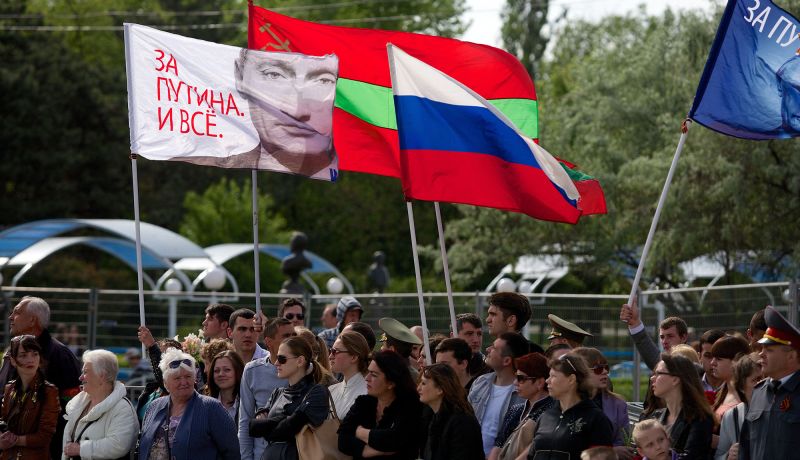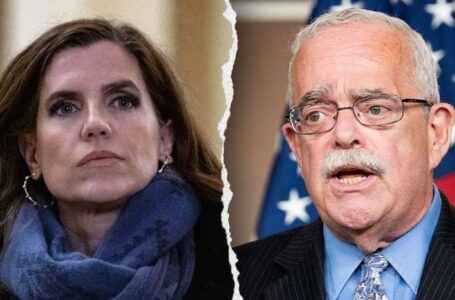USAID staffers stunned, angered by Trump admin’s DOGE shutdown of $40B agency
A breakaway region in Europe is asking Russia for protection. Here’s what to know


Pro-Russian rebels in a separatist sliver of Moldova have asked President Vladimir Putin to protect their region from what they claim are threats from Moldova’s government.
Transnistria, which illegally split from Moldova as the Soviet Union crumbled, has remained firmly within the Kremlin’s orbit while Moldova, which borders Ukraine, is bidding to join the European Union.
In a special congress on Wednesday, politicians in Transnistria asked Moscow to guard it from “increasing pressure from Moldova,” and the Kremlin later said protecting its “compatriots” was a priority, Russian state media RIA Novosti reported.
While the congress initially sparked fears that Moscow could press ahead with its longstanding plan to destabilize Moldova’s increasingly pro-Western government, Moldova dismissed it as “propaganda.”
Here’s what you need to know.
What happened in Transnistria?
Meetings of Transnistria’s Congress of Deputies, a Soviet-era decision-making model, are rare but often significant. A Congress of Deputies gave birth to Transnistria in 1990, sparking a war between the Moscow-backed separatists and the fledgling Moldovan republic two years later.
No country officially recognizes Transnistria, where Russia has kept a steadily dwindling military presence for decades, now standing at around 1,500 troops.
Before Wednesday, the congress’ most recent meeting was in 2006, when it passed a referendum calling to join Russia. When Transnistrian politicians unexpectedly announced a new meeting, analysts suggested this could lead to fresh calls for unification with Russia. Moldovan and Ukrainian officials downplayed this speculation.
The congress stopped short of this extreme outcome, instead passing a resolution appealing to Russia to provide more than 220,000 Russian nationals in Transnistria with greater “protection” from Moldovan authorities.
“Transnistria will persistently fight for its identity, the rights and interests of the Transnistrian people and will not give up on protecting them, despite any blackmail or external pressure,” the resolution said, according to Russian state media TASS.
Russia’s Foreign Ministry said “protecting the interests of the inhabitants of Transnistria, our compatriots, is one of the priorities.”
Moldovan authorities dismissed the congress as an attempt to stoke “hysteria.”
“There are no dangers of escalation and destabilization of the situation in this region of our country,” spokesperson Daniel Voda wrote on Telegram. “What is happening in Tiraspol [the region’s capital] is a propaganda event.”
Meanwhile, US State Department spokesperson Matt Miller said Wednesday that the United States is “watching Russia’s actions in Transnistria and the broader situation there very closely.”
Why hold a congress now?
Russia’s war in Ukraine has had a profound effect on Transnistria’s economy. Ukraine closed its border with Transnistria when the war began, cutting off about a quarter of the enclave’s trade. While it still receives Russian gas free of charge, the agreement to allow gas transit through Ukraine will expire in December, and there is no guarantee the agreement will be extended.
The war also spurred Moldova to try to resolve its decades-long conflict with Transnistria. Partly in response to the war, the EU granted Moldova candidate status in June 2022, and in December 2023 gave the green light to begin accession negotiations.
While Moldova’s President Maia Sandu indicated she would be willing to join the EU without Transnistria, reunification may streamline the process. A recent blog for the Carnegie Endowment for International Peace argued that “Moldova’s strategy is to hurry the process along by making life as difficult as possible” for Transnistria.
In this vein, Moldova unexpectedly scrapped customs duty reliefs for Transnistrian businesses in January, forcing them to pay levies to both Transnistria and Moldova.
“By offering the separatist region tax exemptions, the Moldovan government had been practically funding the existence of a separatist regime in Tiraspol,” Minzarari said – an arrangement the government no longer felt it had to tolerate.
Minzarari said the dispute had created opportunities for Russian authorities to “fish in troubled waters.”
Why is Russia interested in Moldova?
If Russia’s invasion of Ukraine had gone as planned, it would have captured the capital Kyiv in days and the rest of the country in weeks, sweeping across Ukraine’s coastline to the southwestern city of Odesa near Transnistria.
The then-commander of Russia’s Central Military Region, Maj. Gen. Rustam Minnekaev, said one aim of the so-called “special military operation” was to establish a corridor through southern Ukraine to Transnistria, as Russia seeks to reunite with its “compatriots abroad.”
Although Ukraine halted Moscow’s progress at Kherson, around 350 kilometers (220 miles) from Transnistria, analysts have stressed that Russia has retained designs on Moldova.
“The Kremlin seeks to use Transnistria as a Russian-controlled proxy that it can use to derail Moldova’s EU accession process, among other things,” the Institute for the Study of War, a US-based think tank, warned in a report last week.
Putin justified Russia’s 2014 annexation of Crimea and military operations in Donetsk and Luhansk as an effort to protect Russian-speaking citizens in eastern Ukraine, whom he alleged were under threat from Kyiv.
Minzarari said there were “strong parallels” between that rhetoric and the sort used recently by the Transnistrian government. In an interview with RIA Novosti, President Vadim Kranoselsky claimed that the Moldovan government was preparing to carry out terror attacks against Transnistria ahead of a possible invasion, without providing evidence.
However, other analysts argue that, rather than underscoring Russia’s influence on the region, the situation in Transnistria is instead a reminder of how Moscow has so far failed to achieve its key war aims.











